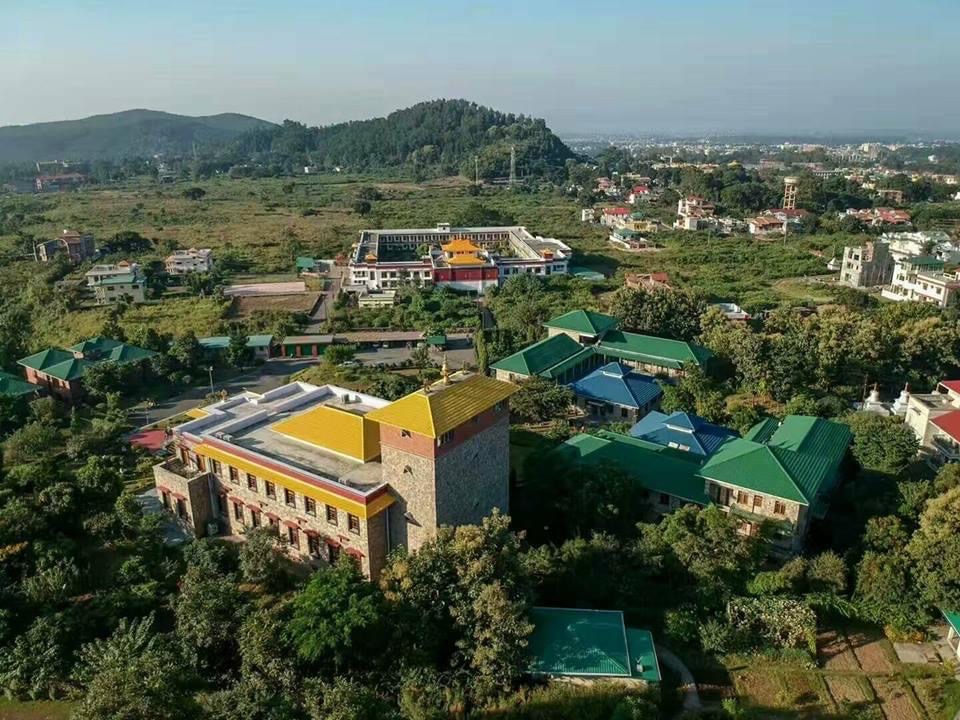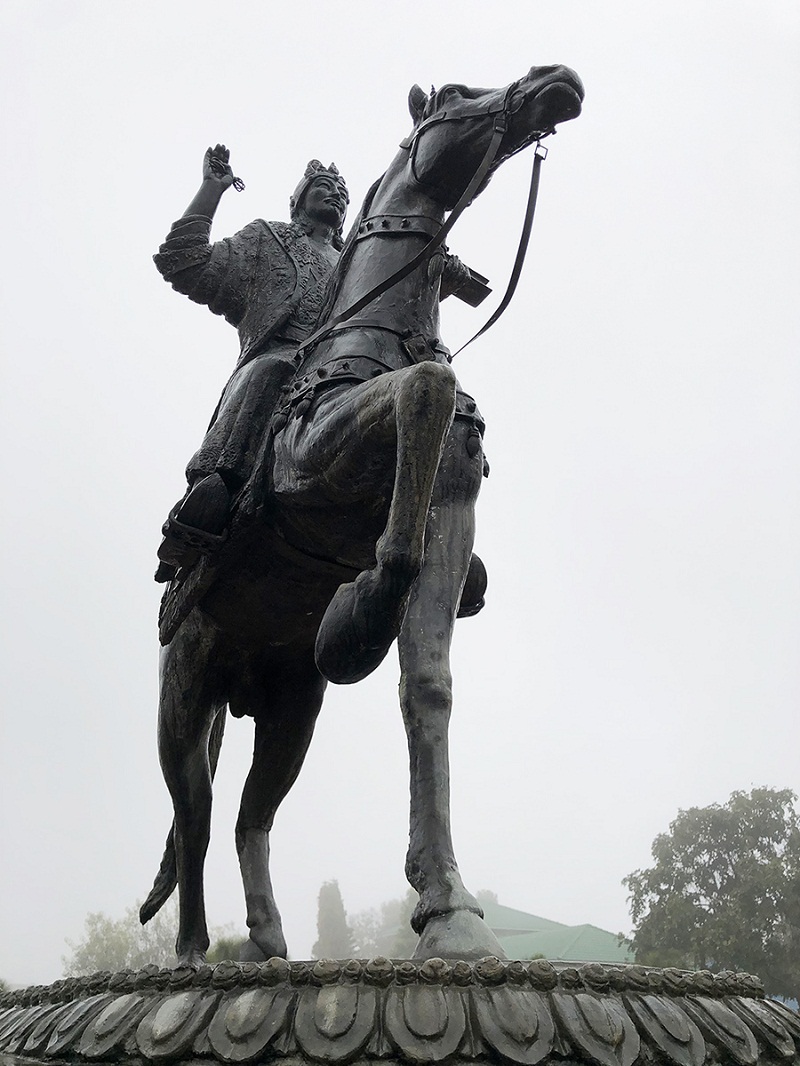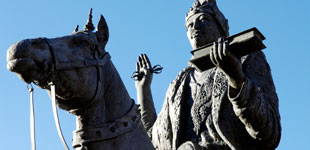

Songtsen Library is the fruition of a long-held vision of His Holiness Drikung Chetsang Rinpoche. The construction of the institution began 1999 and was completed in July 2001. It was inaugurated on March 6, 2003 by His Holiness the 14th Dalai Lama.
Since the preservation and promotion of Central Asian art as epitomized in the paintings and sculpture of the Dunhuang caves is one aspect of the Library’s mission, much artwork has been created for the Library based on extensive research and consultations with Tibetologists to insure historic accuracy of details.


Paintings on the ceiling of the reading room depict Buddha Shakyamuni with Shariputra and Maudgalyayana, Avaloketeshvara with the bodhisattvas Manjusuri and Vajrapani, King Nyatri Tsenpo (2nd century BC), the first king of Tibet, and Thonmi Sambhota (c. 800 AD), the great translator of the first Buddhist texts that came to Tibet. The painting style and colors reflect the light colors of ancient paintings of the Dunhuang and Guge regions. Statues of the three Dharma Kings Songtsen Gampo (617-650 AD), Tri Ralpachen (806-841), and Trisong Detsen (742-785) carved from Indian sandstone are placed in the reading room.
The tower on top of the Library building houses a shrine room with a beautiful statue of the 1000-armed Avalokiteshvara. The statue was made in Tibet with the rare medicinal wood agaru, famed for its aroma.

A Statue of King Songtsen Gampo on horseback in front of the Library depicts him according to a vision of the 10th Panchen Lama, in his peaceful aspect carrying a text and Dorje.
The sculpture, executed by the Western nun Khenmo Drolma, has traits reminiscent of the artwork of Gandhara, where contact between the cultures of Asia and the occident generated a magnificent aesthetic symbiosis.


